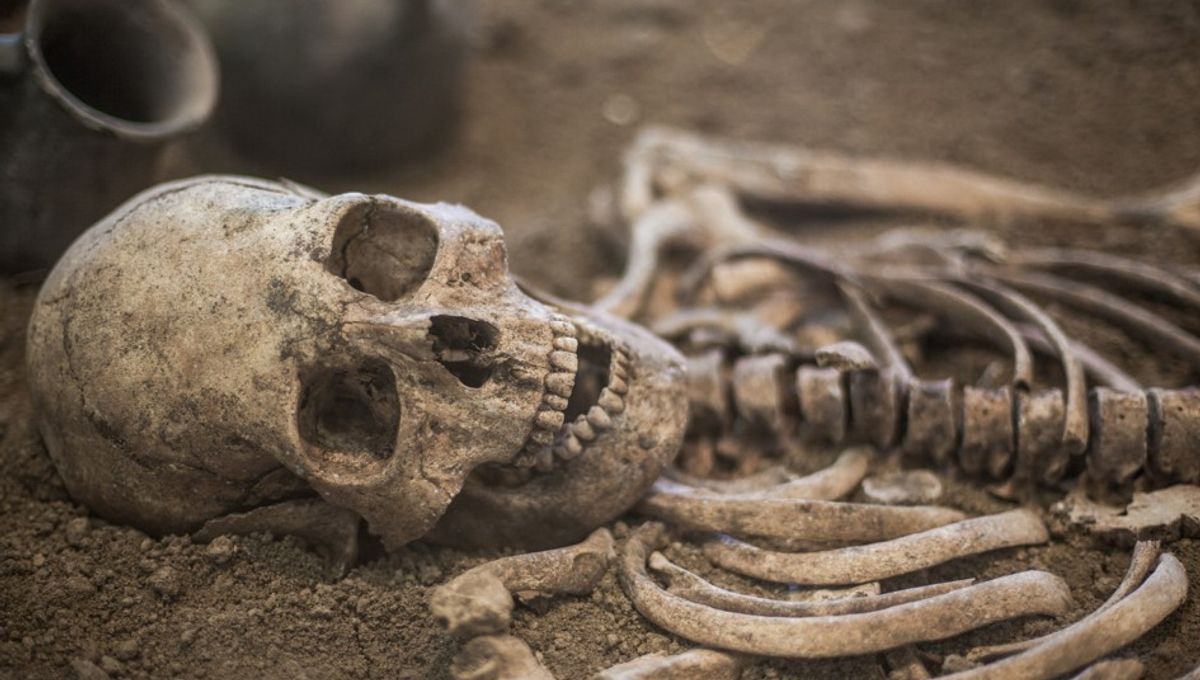
Both Neanderthals and modern humans started burying their dead at approximately the same time and in roughly the same place, according to the authors of a new study. Seeking to explain why the two groups suddenly decided to start interring corpses, the researchers suggest that burials may have acted as a means of marking territory as competition between different hominin species intensified.
After examining data from 17 ancient human burial sites across Western Asia, the study authors conclude that funerary practices probably originated in the Levant region around 120,000 years ago, before spreading to Europe and Africa. The earliest Homo sapiens burials, for instance, were found at the Qafzeh and Skhul caves in Israel, while the oldest Neanderthal example comes from the Tabun cave in the same country.
Other important burial spots in the region include the famous Shanidar cave in Iraq, where a group of Neanderthal skeletons dated to around 100,000 years ago have been discovered.
What’s particularly surprising about all this is that neither species appears to have adopted the practice in their ancestral homelands. Modern humans, for example, came from Africa, yet the continent’s oldest known burial – belonging to a child in Kenya – dates to just 78,000 years ago. Neanderthals, on the other hand, originate in Europe, though none of their burial sites in the region are anywhere near as old as the Levantine skeletons.
The study authors therefore conclude that “the custom of human burials was probably innovated in the Levant from where it probably spread to the Neandertals in Europe.” They also note that the concentration of Middle Paleolithic burials is much higher in the Levant than anywhere else in the world – an important detail that sheds some light on how and why these funerary practices first came about.
During the last interglacial period, modern humans from Africa and Neanderthals from Europe migrated into the Levant, which became a vital crossroads where multiple hominin groups were able to interact. According to the researchers, the two species probably “explored the same geographical niches, utilized similar resources, and may even [have] inhabited the same caves,” within this relatively small region.
The authors therefore “hypothesize that the growing frequency of burials by these two populations in Western Asia is linked to the intensified competition for resources and space resulting from the arrival of these populations.” In other words, when one species started burying their dead, the other may have followed suit as a means of claiming ownership of land.
Looking at the characteristics of Homo sapiens and Neanderthal burials, the researchers find that both groups interred people of all ages, suggesting that they honored the deceased regardless of whether they were infants, adolescents or adults. Both species also regularly deposited grave goods in the form of animal remains alongside their dearly departed.
However, a number of stark differences between Neanderthal and Homo sapiens burials were also noted. For instance, the authors say that “Neandertals buried their dead mostly within the cave, either at the center of the cave or near the walls,” while modern humans “buried their dead outside of the cave – in the cave terrace, or in a rock shelter nearby.”
Furthermore, while Homo sapiens always laid corpses on their backs in a “flexed posture”, Neanderthals buried their dead in a variety of different positions. The latter group also stands out for its use of limestone rocks placed near the head of a burial “as if it was used as a headrest.”
Homo sapiens, meanwhile, rarely placed rocks in graves, but did engage in other symbolic activities, as evidenced by the presence of sea shells and ochre at several burial sites.
The study has been published in the journal L’Anthropologie.
Source Link: Neanderthals And Modern Humans Started Burying Their Dead At The Same Time And Place